Car Craft’s Dream Roadster
From Car Craft Magazine, October, 1961
Drawings and Design by Bob Hubbach and Chuck Pelly
I saved this article out of a 1961 Car Craft back in 1961 and have kept it since then. I went through my files recently, and noticed and recognized the name Bob Hubbach. This had to be posted.—Gary
THE CONCEPT BEHIND THE DESIGN of our roadster results directly from the fact that not every custom car enthusiast can find the mint condition ’27-T or Deuce body to start with—therefore we have based our ideas on the feasibility of employing contemporary automotive parts which can be obtained from dealers, wrecking yards, and automotive supply houses.
The main body panels are from two cars: the front (hood, fenders, grille-work and headlights) are 1960 Pontiac, while the rear section is from a ’60 or ’61 Chevrolet Corvair.
As shown in the sketches by Bob Hubbach and Chuck Pelly, the hood is sectioned and re-welded to match the Corvair rear end. An extra section of Corvair panel above the body break line is welded to blend with the Pontiac theme. The chassis might be built up from tubing for a light but strong space-frame, or tubing could be used to build up a Ford Falcon frame shortened to an 88-inch wheelbase. The Corvair swing-axle can be used or a limited-slip axle and a 4-speed Corvette gearbox—this could be a real handler!
Continuing the sports-roadster theme, we’ll pull two of the bucket seat units out of a Corvair Monza Club Coupe, and fill the instrument panels with such goodies as the over-sized tachometer and speedometer made by Smiths for the Triumph TR-3. Otherwise, we’ll go the Stewart-Warner route on instrumentation, with oil and water temperature gauges, gas, oil pressure gauge and ammeter. Several sports car accessory houses are handling aluminum and laminated wood steering wheels that will add a final touch to the interior.
The racing windscreen is hand-formed, a la Scarab, and the rollbar slides into two tubes which are welded to the frames when used on the track.
The alterations at the front are as follows: 1960 Buick headlight rings are Frenched, with ‘59 Olds parking lights in the outer rings. The inner rings will receive formed ducting to direct cooling air to the front brakes, and a recessed wire mesh screen will take the place of the lens normally found here. An alternate would be to use all four rings for cooling ducts, with pop-up headlights concealed in the leading edges of the hood, bringing the lights up to a legal 24-inches above the ground.
With wheel wells cut out to allow the front tires to protrude above the hood, motorcycle fenders could be installed for road use and removed at the strip or track if desired.
Under the functional air scoop in the hood sits a Buick aluminum V-8 or a Pontiac Tempest 4-banger. The carb set-up is optional. Tuned header pipes exit from behind the front wheel openings and dump into a finned muffler jacket which carries back to a single exhaust pipe on each side. Two rows of 4-inch louvers are punched to straddle each side of the air scoop for additional underhood cooling. Engine cooling is achieved with a wide, chopped radiator and expansion tank, and a finned oil cooler keeps things under control.
The rear modifications are illustrated and are performed as follows: the rear wheel housing is cut out all the way back, exposing the rear of the tire. Sheet metal is then installed and moulded around to cap off the rough edges. The remaining taillight bezel and lamp may be left stock or altered by Frenching and changing lenses, with early Pontiac or perhaps ’61 Dodge Lancer.
Nerf bars are added front and rear—’61 T-Bird can be used in front and a handcrafted tube in the rear. The deck lid is removed, and the compartments for luggage and tools are on the sides—a large fuel tank with an upper, open compartment for a spare tire (up to 6.70×15) is to replace what would normally be the trunk, or in the case of the Corvair, the engine compartment. The spare wheel and tire, now exposed, slide into the ring that forms this compartment, using a long-necked gas filler with a quick-fill cap as a center guide. A custom-made Naugahyde tonneau-tarp is snap-mounted around the perimeter of the deck lid opening, and around the inside of the spare tire opening.
For those who wish some protection from the elements, we have included a coupe model, which uses a fiberglass top, hand formed to fit windshield and some custom-cut glass for a rear window, which may be dropped behind the seats and rolled up like a conventional side window.
The sides are cut to allow doors as shown in the renderings. These doors may be formed of fiberglass or metal, although we prefer the fiberglass for its lightness. The doors would be fitted with glass and roll- down mechanisms from the Karmann-Ghia Volkswagen.
The top incorporates a roll bar with two headrests, which drop down from the bar and are adjustable for positioning. The top will always line up correctly, because the roll bar must slide into the opening provided by bracing tubes on each side and clips which secure the racing wind screen. Therefore, variations are possible using the coupe body and roadster windscreen. The roadster should also have a Naugahyde tonneau cover which folds down behind the seats when not performing its role of covering the bucket seats.
Tires are 6.70×15 at the rear, with a variety of smaller rims and tires for the front. Traction Masters would add extra bite. The overall height of the roadster is a mere 38-inches, while the coupe towers 47-inches from ground to top. Overall length of both is 160-inches.

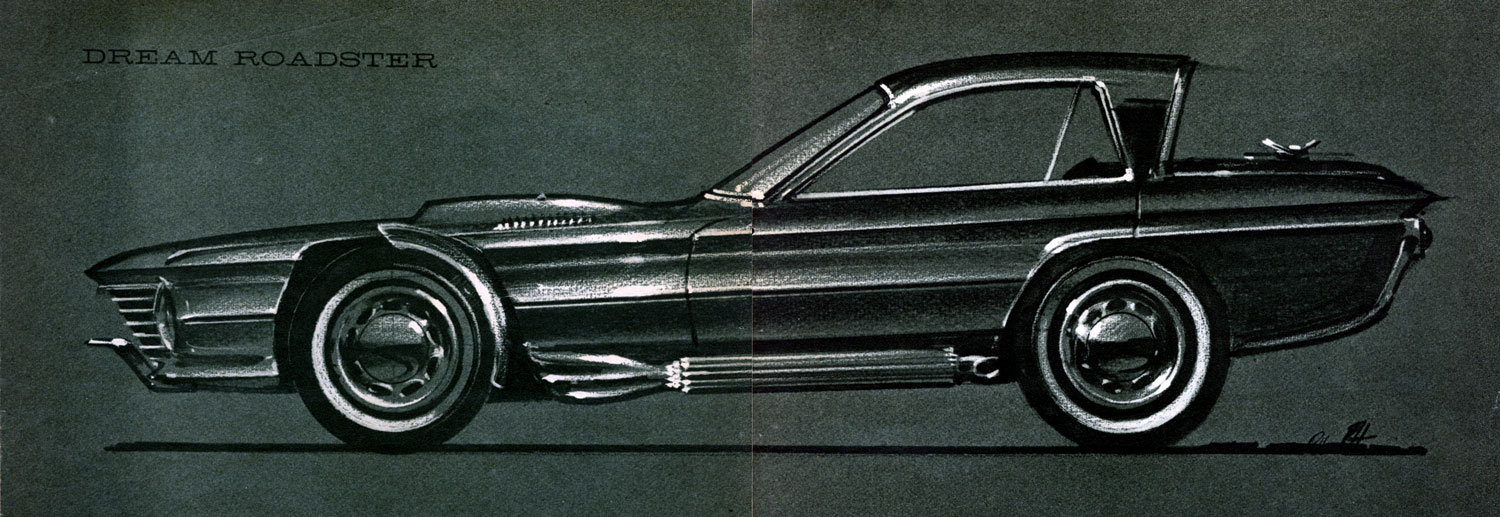
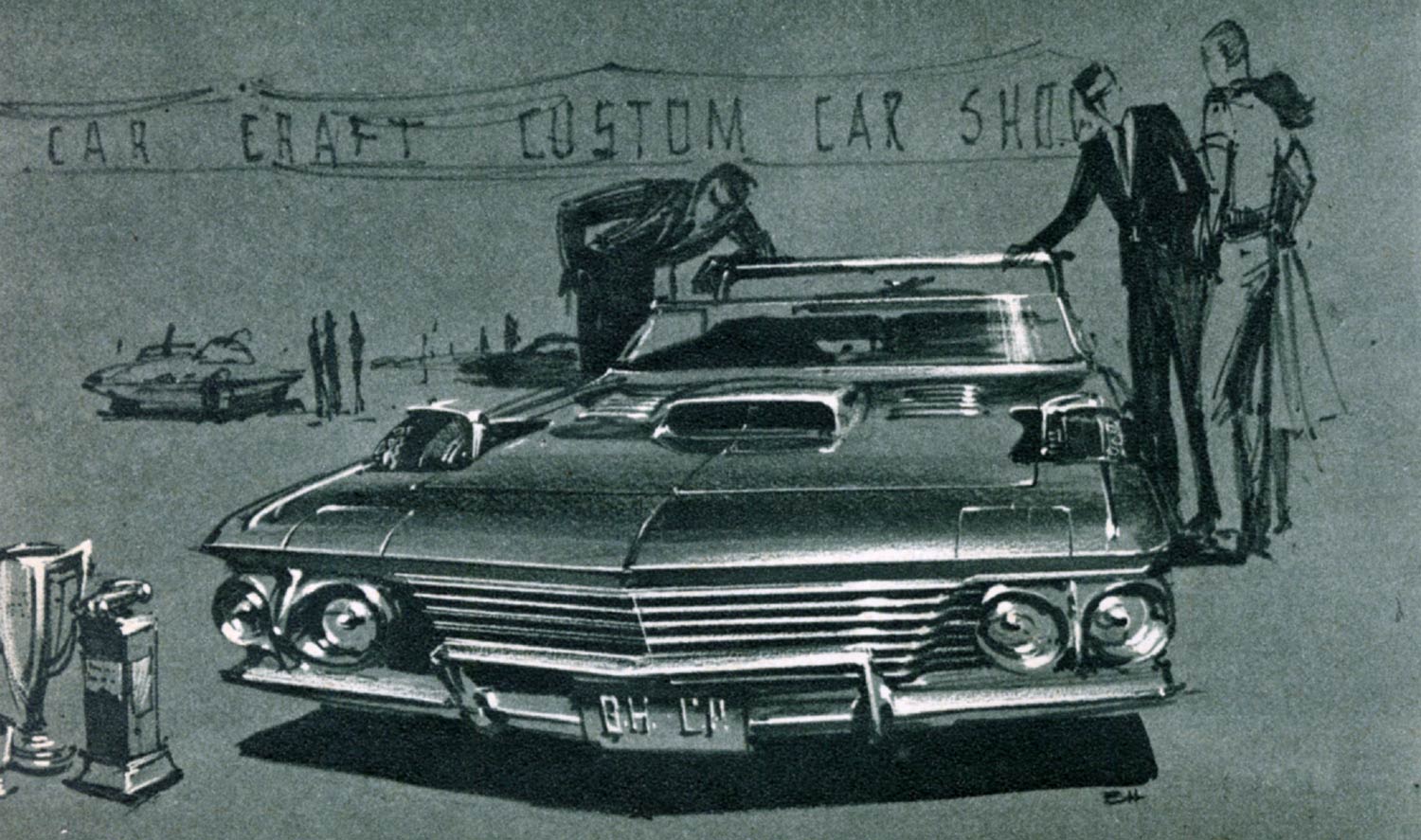
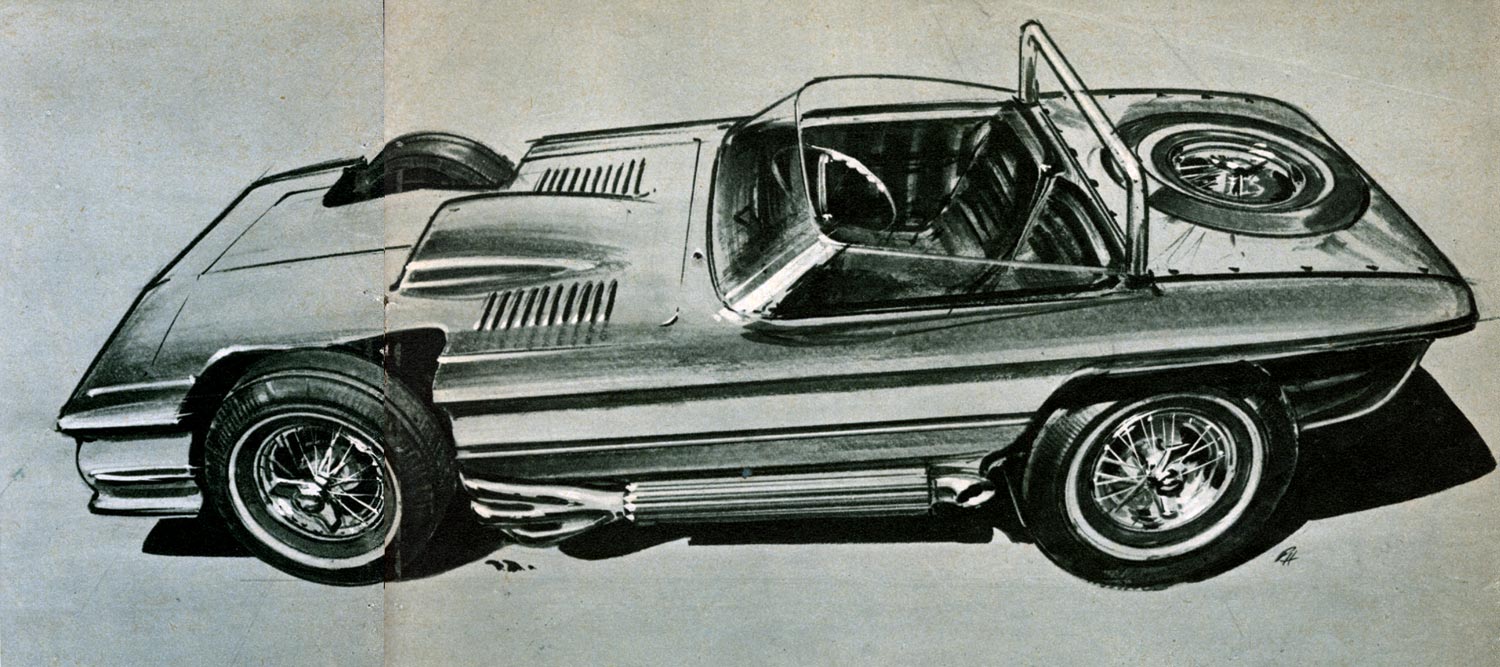
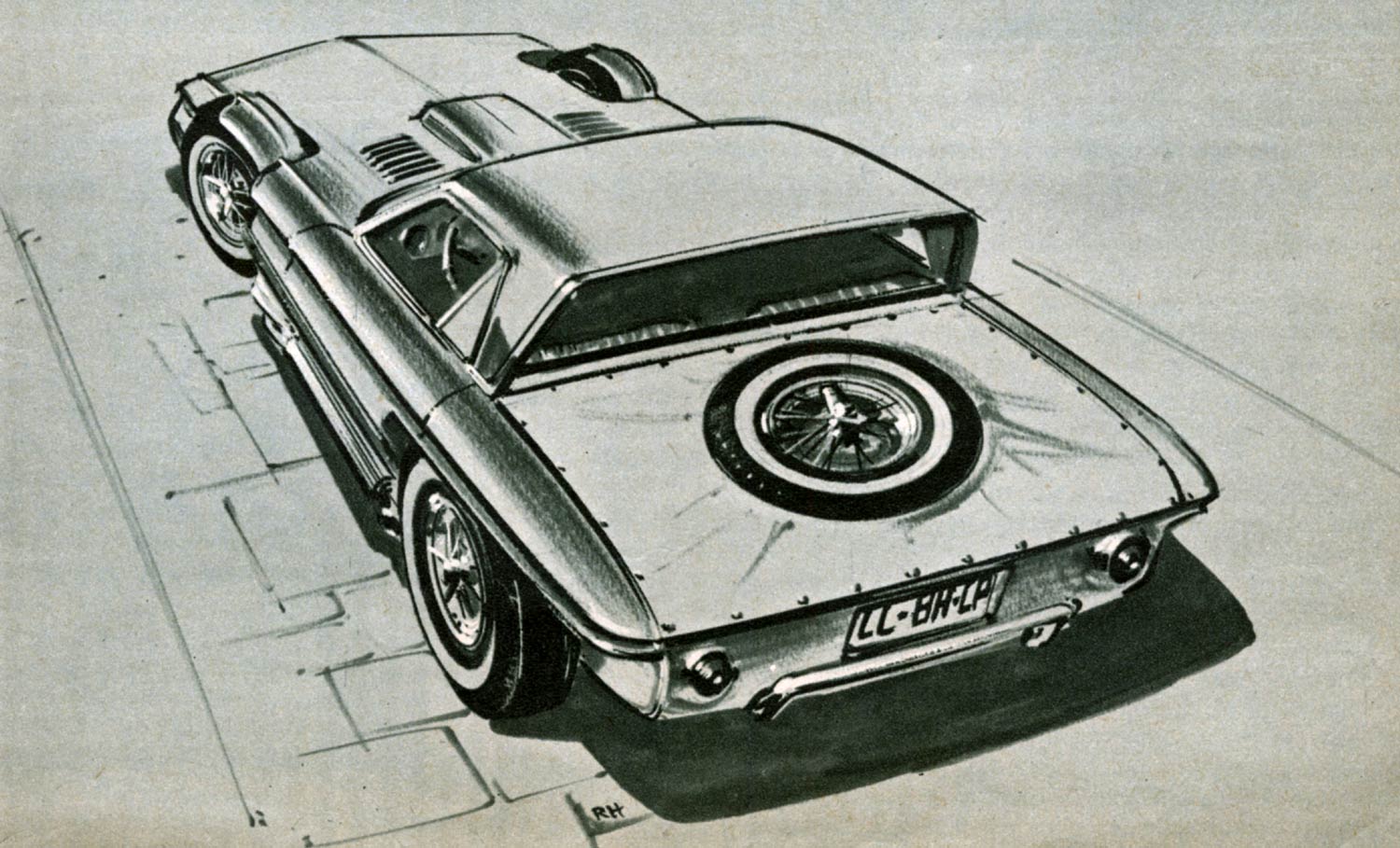
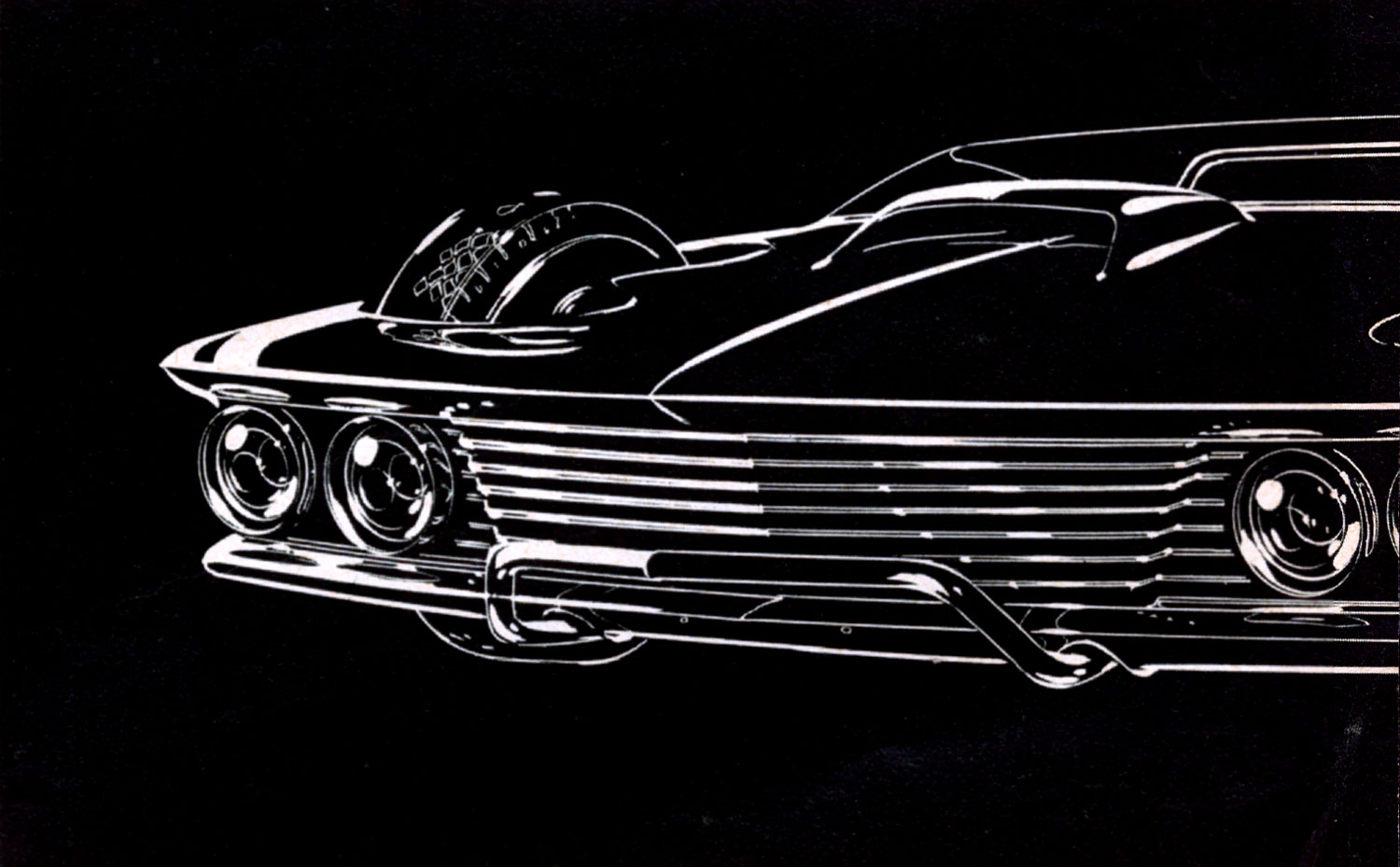
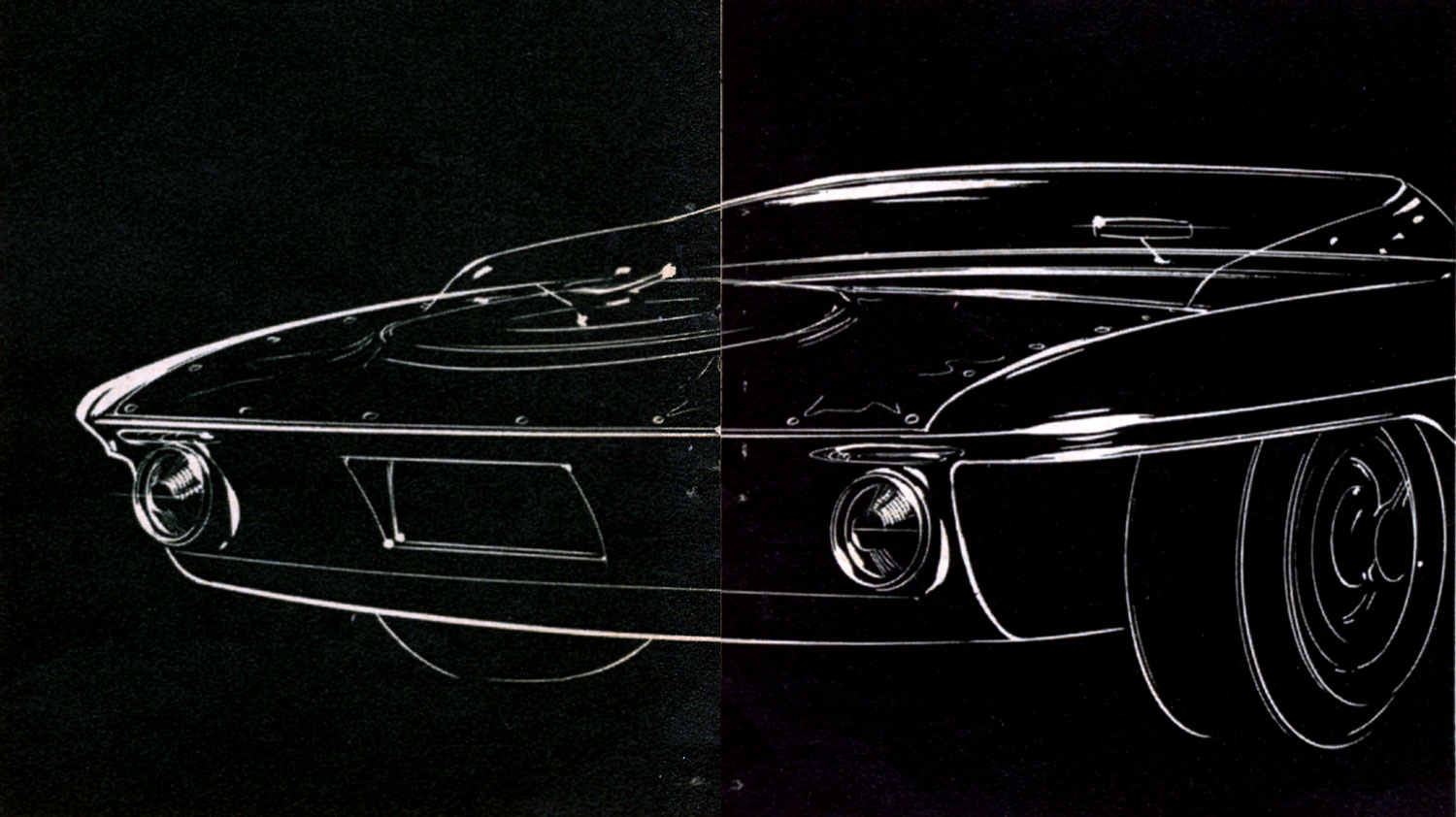
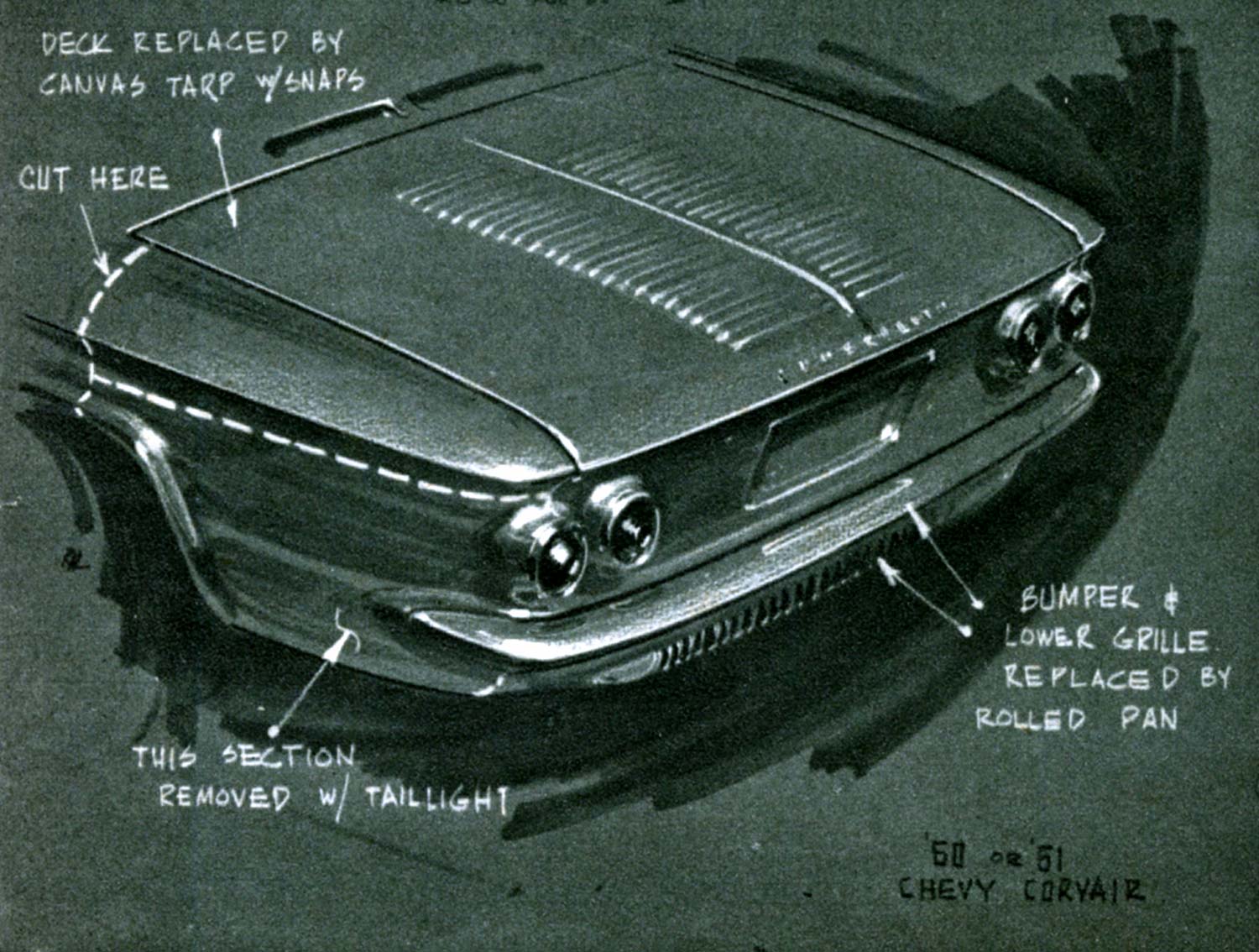
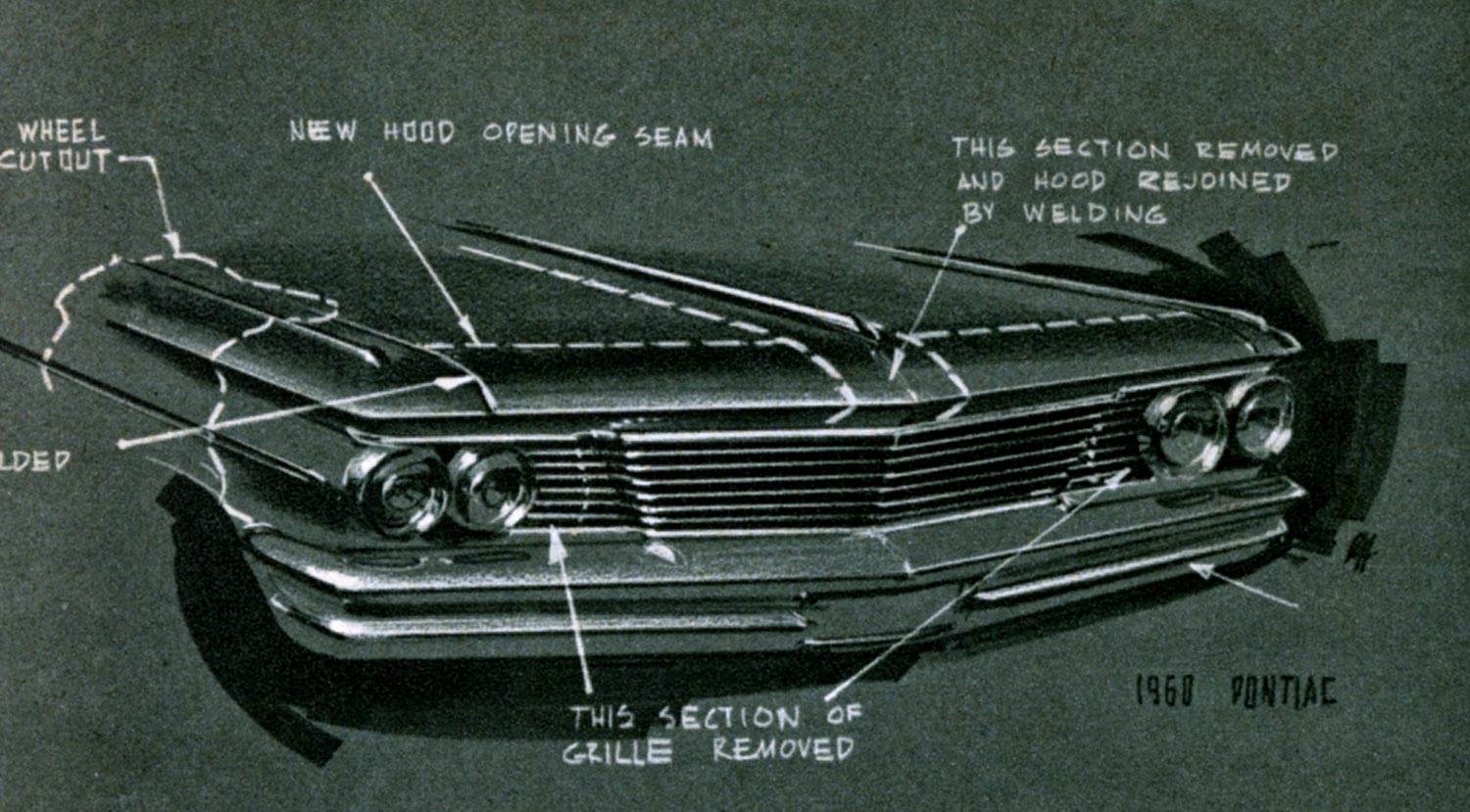
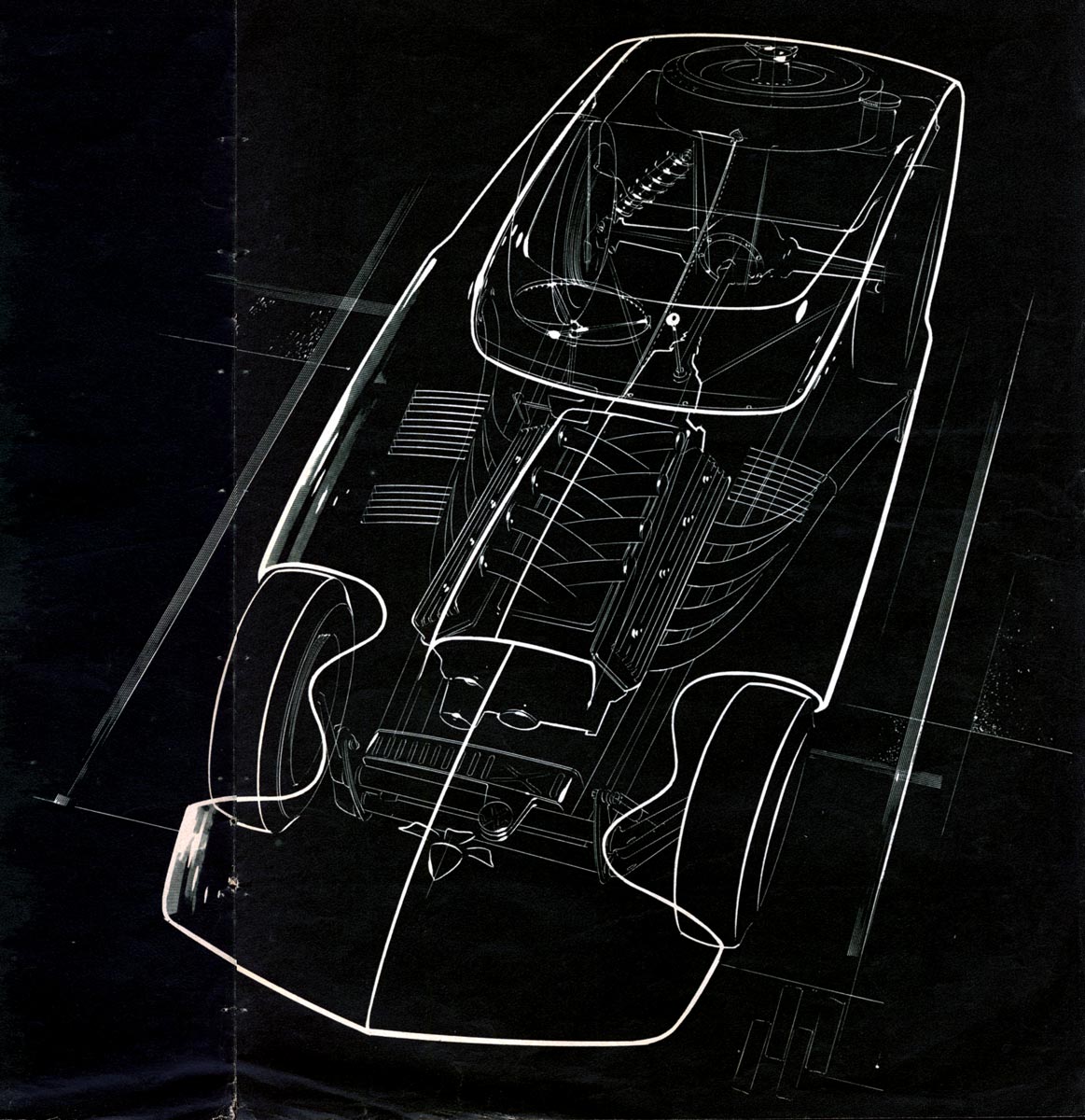
Very cool stuff. I’ve been a fan of the car ever since I first saw photos of it in Car Craft back then, but don’t recall ever seeing these renderings before. I thought readers might like to see a photo of the finished car built by Bill Cushenberry.
Last year at EyesOn Design we had a recent recreation of this car but interpreted as an open roadster built by Paul Jurewicz. He liked the original car so much he had to build his own. Asymmetrical and built from several different cars, like the original, it was very unique.
Bob Hubbach was a Chrysler designer who just recently passed. Very talented.
Since the rear and the body lines resemble a Studebaker Lark, it may work out better to start with a Lark and section the body. if the Lark was made longer in front of the front wheels it would have the effect of moving the door to the rear.
The lark also has removable rear fenders, i.e. bolted to the body. Use rear panel mounted round tail lights.
The thing was, Car Craft was trying to show the way past recycling ’29-’36 car bodies into hot rods and moving toward how to instead recycle NEWER cars into the concept. A great idea, but it stalled. The standard after all these years is still a ’32 Ford roadster. I wasn’t that taken by the Cushenberry derivative, to be honest; I thought the depictions showed a much nicer concept, and without that thankfully-forgotten-now asymmetrical look.
The restored original is now in Minnesota in a private collection.
The idea to use a shortened Ford Falcon frame would be clever since the Falcon did not have a frame !